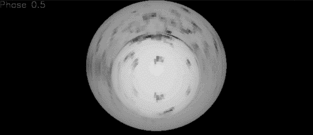Research and degree summary
 I am an astrophysicist working at the Open University, since August 2014.
Previously, I was a research fellow at the University of Hertfordshire, following post doctoral research at the University of St Andrews.
My first research position was at the University of Porto, Portugal, after gaining my Ph.D. "Doppler imaging of late type stars" and first degree in Astrophysics at the University of St Andrews.
I am an astrophysicist working at the Open University, since August 2014.
Previously, I was a research fellow at the University of Hertfordshire, following post doctoral research at the University of St Andrews.
My first research position was at the University of Porto, Portugal, after gaining my Ph.D. "Doppler imaging of late type stars" and first degree in Astrophysics at the University of St Andrews.
Publications
CV and publications [154K PDF] |
Thesis: "Doppler imaging of late type stars" [5.6MB PDF]


-
Cool Stars
My thesis, "Doppler imaging of late type stars", presents the first Doppler images of rapidly rotating G dwarfs in the α Persei Cluster, and similar images of K dwarfs. I went on to obtain the first images of M dwarfs, and measure the latitude-dependent rotation in a number of stars from early-G to early-M spectral type, showing that the differential rotation is proportional to stellar mass. Stars thus rotate as solid bodies by early M spectral type.
-
Close Orbiting Gas Giants
The chance that a planet is seen to transit is small, and so most exoplanets do not easily afford the opportunity of further study of their atmospheres. High resolution spectroscopy holds the potential to extract the planetary signature of non-transiting planets if the weak signal (relative to the star) can be extracted from the spectra. I placed some of the first limits on the planet-to-star contrast ratio in the infrared using this technique, which lead to detection of CO in the planet HD 189733b.
-
Low-mass planets at the bottom of the main serquence
Planets are potentially more easy to detect at the bottom of the main sequence since the reflex motion of the star which they orbit is larger. I have pioneered observations of the least massive M dwarfs in the red-optical, and proved that few m/s precision can be obtained. Earth-mass planets can therefore potentially be detected in the classical habitable zones of these stars with only modest allocations of telescope time.